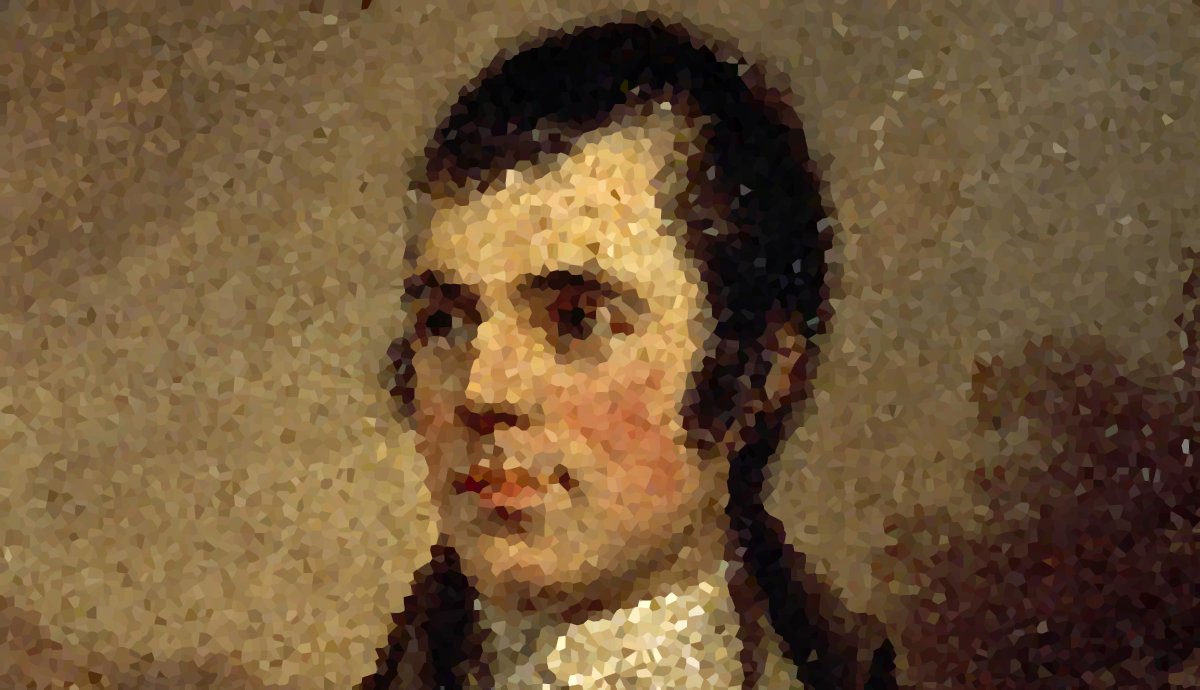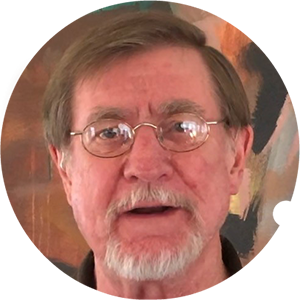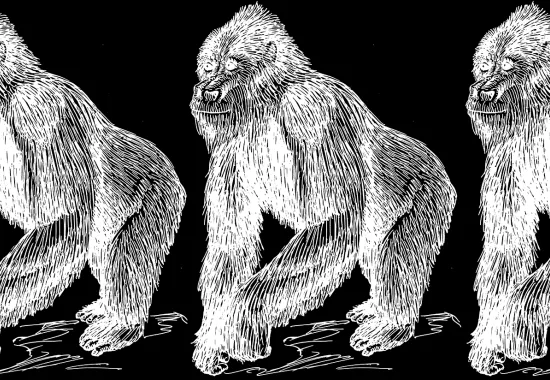From Scotland to Kansas—A Diaspora
Tom, Tom, the Piper’s Son: Learning the Repertoire
Dad’s mother spoke and read to him in the Lowland Scottish dialect when he was a child. Nearly forty years later, in the early to mid-1960s, when he began to read Burns at the table, he had a nearly perfect brogue. By the early 1970s, Stu took up the bagpipes; he bought and wore a kilt. He and another aspiring piper, Bill Read, joined Topeka’s Collins Park Parade for the Bicentennial Independence Day, July 4, 1976. They continued the tradition for twenty years. Another of my father’s goals: to play pipes for his mother, that she might dance. He wrote in “Recovery of the Lost, Good Object” that he “played for my mother, then in her 80s, who hiked her skirts a bit and danced the Highland Fling.” This was another independence for my father, to become the Scotsman—poetry, music, costume, and clan—at the age of fifty-two, and to inspire his mother, the woman once “cold” and “depressed,” to dance. A photograph taken in our family room captures the moment: my diminutive grandmother, gray hair curly-permed, in a blue print dress, left arm behind her back, right arm raised above her head, right leg raised, too, her lips lifted to a wonderful smile.
My father’s newly expressed Scottishness affected our family. He began affectionately calling my mother “Tucker Jo,” as “Jo” is Scots for “joy,” and also “lover,” “dear,” “sweetheart,” or “darling.” In 1973, Tim named his first daughter Jennifer Jo Averill. My father’s full name, Stuart Carson Averill, is embedded in the middle name of my sister Libby’s son, Jacob Stuart Rosen, who has a son named Carson. All of us siblings can recite “A Red, Red Rose,” “The Henpecked Husband,” and “Epigram To Miss Ainslie In Church.”
I sometimes joke that I left for the University of Kansas in 1967 to return to a suddenly Scottish home. I lived in Lawrence, then Iowa City, then Lawrence again, but in 1982 I moved back to Topeka. My father encouraged me to learn bagpipes and bought me a practice chanter. Learning Great Highland Bagpipes is daunting. While away, I’d missed Stu’s apprenticeship on the pipes, the fingering, the squawking that sounds like a sick duck. Nine notes, no octaves, no sharps and flats—how difficult can it be? Most instruments, including the human voice, punctuate silence with sound. With bagpipes, a continuous air instrument, notes punctuate sound: to articulate the same note twice, a piper must play a grace note. Gracings are complicated, from the quick strike of one note to a string of three, four and more. Along with the three Great Highland Bagpipe drones, tuned to octaves, gracings give the bagpipes that guttural, skirling lilt that some love. Some do not. Oscar Wilde, upon first hearing the Great Highland Pipes, quipped: “Thank God there is no smell.” Pipes are indeed intense, one of the loudest of instruments, an interesting choice for Stu, who was quiet, calm, and unassuming, who did not usually call attention to himself.
I became proficient on the practice chanter, and my father purchased a set of Great Highland pipes for me from a librarian friend who was no longer playing. I blew the bag full, squeezed, and … nothing. I squeezed harder … a brief, terrible noise … a longer shriek … I moved my fingers … nothing. The process is akin to learning to drive stick shift—when to let out the clutch, when to put on the gas, mostly stalling. How could my practice chanter mastery of “Scots Wha Hae” (the tune every piper learns first) sound so awful, when sounding at all? I persisted. The most important muscles a piper develops are those of the lips. Filling the bag with air once is not so difficult, nor is squeezing the bag. But keeping the lips sealed on the blow pipe through numerous tunes takes strength: anyone blowing up balloons for a child’s party will remember how soon lips can tire. Eventually, I gained mastery.
Some years after my father’s death I dreamed I was in a hilly cemetery. I felt compelled to open the door of a crypt on a craggy rise.
I learned the repertoire of Stu’s band, The Pipers of the Plains. I kilted myself in our clan’s MacPherson plaid—the bright red every-day tartan, while Stu preferred the creamy tones of the dress MacPherson. I marched in parades, competed in Highland Games. I joined my father in his Scottishness and have fond memories of Topeka St. Patrick’s Day parades, followed by gigs at local bars, late into the night. Our lips always blew out.
The night before my father’s death of a massive heart attack, we attended pipe practice together. He was seventy-two years old; he was tired. He’d been busily preparing for a family reunion celebrating his and my mother’s fiftieth wedding anniversary on August 10, 1996. The anniversary celebration turned into a funeral; family disembarked from flights to the news of Stu’s death August 8. Some had to shop for appropriate clothing.
We wanted pipes at the funeral. Performance shy, I played from the choir balcony at the back of the sanctuary of the First Congregational Church as people arrived. Stu’s piping buddy, Bill Read, in New York visiting relatives, heard about my father’s death and drove all night, arriving in time to join me in the piping. The morning of the funeral I decided to play Stu’s pipes rather than mine. I may have been attempting a sort of resuscitation, breathing into the bag he’d breathed into the night before his death, pushing out his music, my music, Scotland’s music.
After, I wrote a tune, “The Stuart Averill,” and so began a tradition, with thirty-eight tunes now dedicated to family and friends, composed for births, weddings, and, too often, funerals. I inherited Stu’s library of books about Burns and Scotland, over thirty volumes. As “Keeper of the Scottish flame,” I also found myself with his kilt, his pipes, and his music, one manila folder marked, simply, Repertoire. I practiced and recorded each of the tunes in that folder, from the standards like “Scotland the Brave” and “Amazing Grace,” to the haunting “Skye Boat Song,” to his one jig, “Honey in the Bag.” I played a medley the Pipers of the Plains competed with in the Kansas City Highland Games, all newly composed tunes. We did not place well. Still, that’s my favorite medley, with my tune for my father, and “Lament of the Piper’s Son” by my brother Ric, “Alexander’s Welcome” written by band member Steve Denny to welcome my son into the world just five months after the death of the grandfather he never knew. Bill Read had written a slow air, “Kansas No More,” for John Snyder, the librarian whose pipes Stu bought for me, and also a jig, “Teacher on the Green.” Repertoire, the resulting CD, has other tunes written for family, forty minutes of piping, distributed to family and friends.
Some years after my father’s death I dreamed I was in a hilly cemetery. I felt compelled to open the door of a crypt on a craggy rise. Stu, in his dress MacPherson kilt, walked into the sun to give me a frozen smile. I could not speak. I led him back into the darkness of the crypt and woke up. Haunted by that dream for months, I determined to honor my father with a novel of Scottishness. I re-read the poetry of Robert Burns and wrote a love story, The Slow Air of Ewan MacPherson, building it with a scaffolding of Burns lines that fit my four main characters. The novel was published in 2003, seven years after Stu’s death. During that time, though I read Burns, I did not attempt the brogue. That seemed my father’s exclusive territory. And his mother’s.
Recommended
Schizophrenic Sedona
Recense (realized)
Notes on Hands






